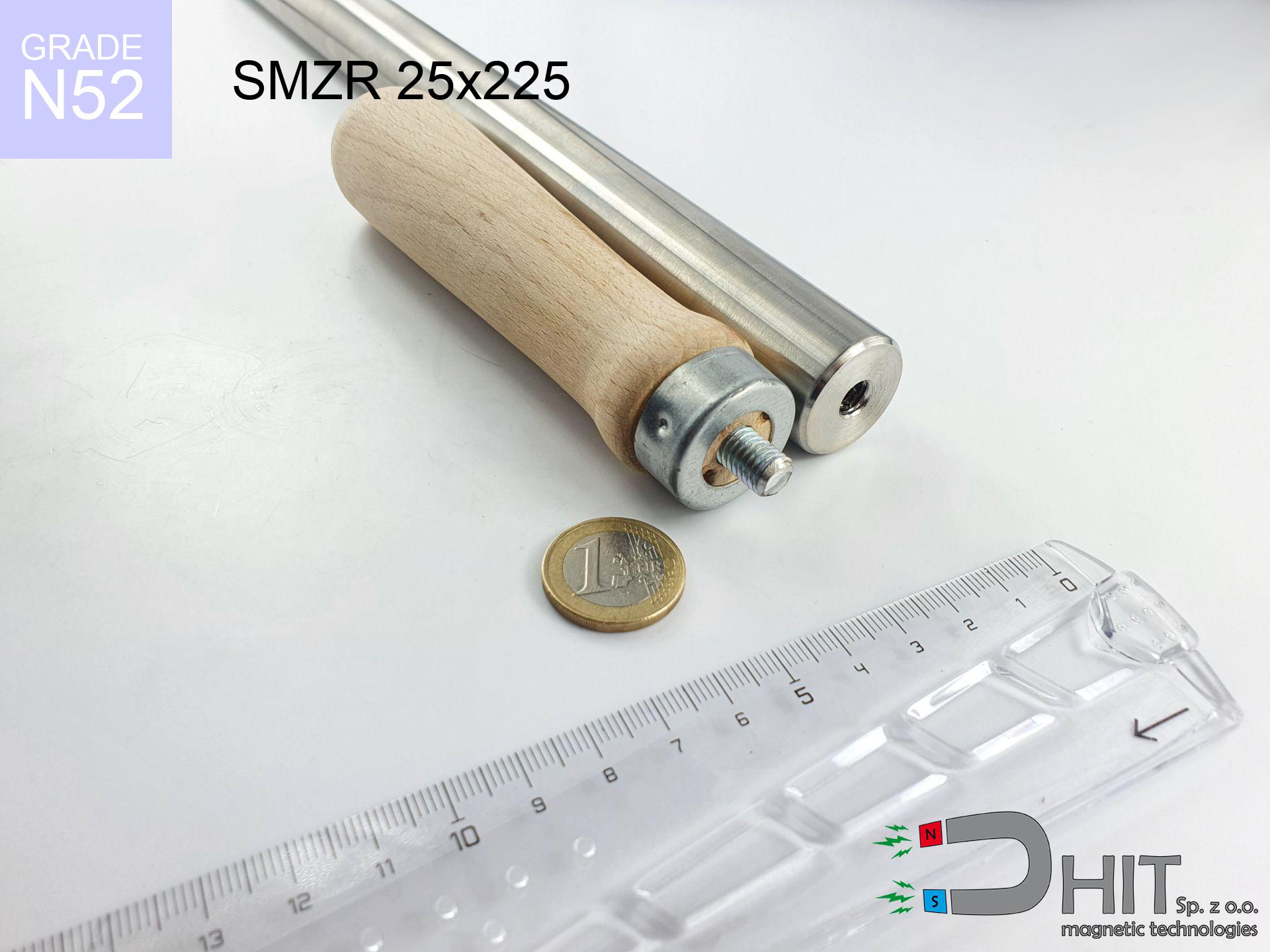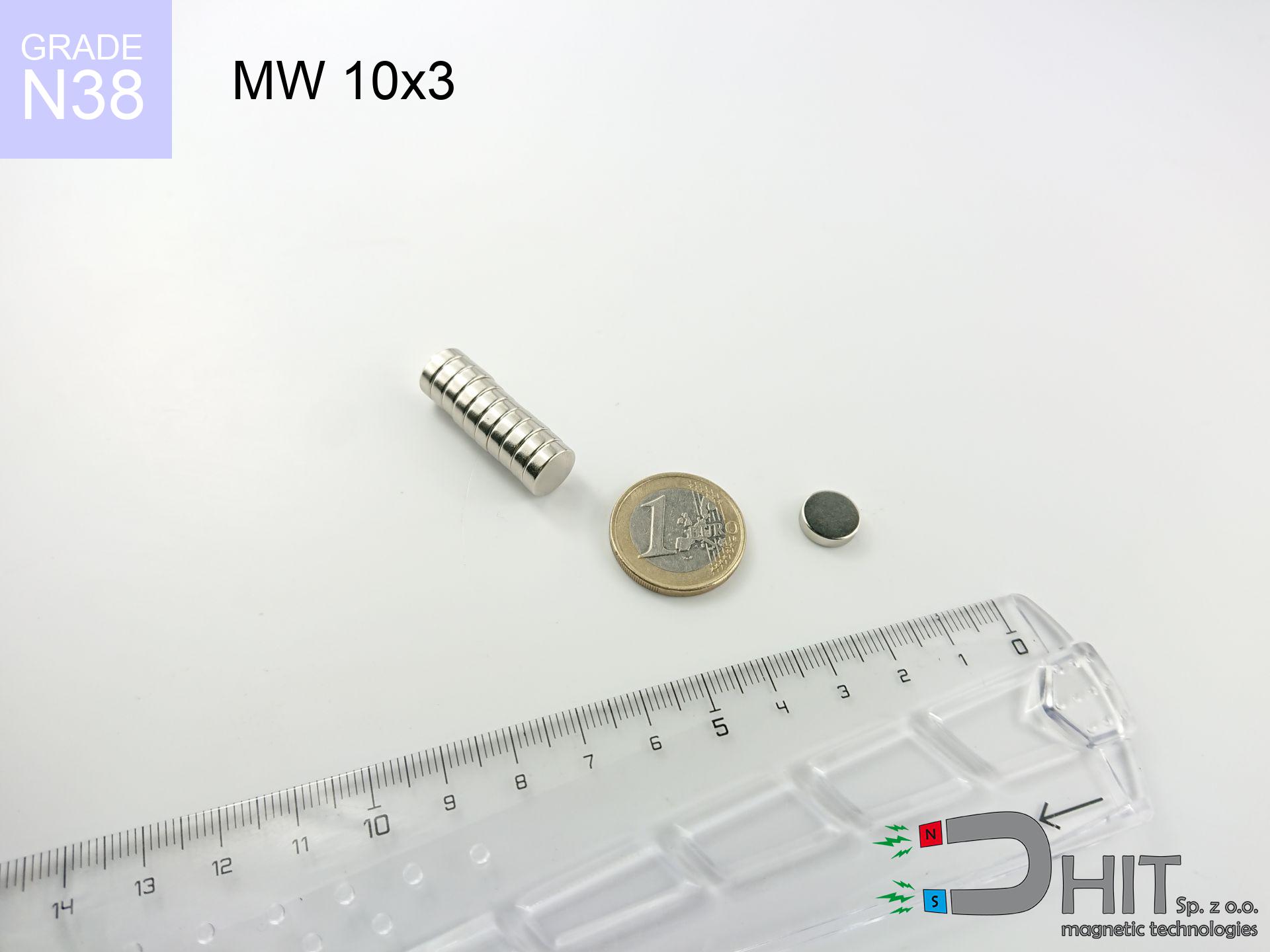SMZR 25x225 / N52 - magnetic separator with handle
magnetic separator with handle
Catalog no 140235
GTIN/EAN: 5906301813439
Diameter Ø
25 mm [±1 mm]
Height
225 mm [±1 mm]
Weight
740 g
Magnetic Flux
~ 8 500 Gauss [±5%]
615.00 ZŁ with VAT / pcs + price for transport
500.00 ZŁ net + 23% VAT / pcs
bulk discounts:
Need more?
Call us
+48 888 99 98 98
if you prefer drop us a message using
inquiry form
the contact section.
Specifications and shape of a neodymium magnet can be verified using our
our magnetic calculator.
Orders placed before 14:00 will be shipped the same business day.
Technical specification of the product - SMZR 25x225 / N52 - magnetic separator with handle
Specification / characteristics - SMZR 25x225 / N52 - magnetic separator with handle
| properties | values |
|---|---|
| Cat. no. | 140235 |
| GTIN/EAN | 5906301813439 |
| Production/Distribution | Dhit sp. z o.o. |
| Country of origin | Poland / China / Germany |
| Customs code | 85059029 |
| Diameter Ø | 25 mm [±1 mm] |
| Height | 225 mm [±1 mm] |
| Weight | 740 g |
| Material Type | Stainless steel AISI 304 / A2 |
| Magnetic Flux | ~ 8 500 Gauss [±5%] |
| Size/Mount Quantity | M8x2 |
| Polarity | circumferential - 8 poles |
| Casing Tube Thickness | 1 mm |
| Manufacturing Tolerance | ±1 mm |
Magnetic properties of material N52
| properties | values | units |
|---|---|---|
| remenance Br [min. - max.] ? | 14.2-14.7 | kGs |
| remenance Br [min. - max.] ? | 1420-1470 | mT |
| coercivity bHc ? | 10.8-12.5 | kOe |
| coercivity bHc ? | 860-995 | kA/m |
| actual internal force iHc | ≥ 12 | kOe |
| actual internal force iHc | ≥ 955 | kA/m |
| energy density [min. - max.] ? | 48-53 | BH max MGOe |
| energy density [min. - max.] ? | 380-422 | BH max KJ/m |
| max. temperature ? | ≤ 80 | °C |
Physical properties of sintered neodymium magnets Nd2Fe14B at 20°C
| properties | values | units |
|---|---|---|
| Vickers hardness | ≥550 | Hv |
| Density | ≥7.4 | g/cm3 |
| Curie Temperature TC | 312 - 380 | °C |
| Curie Temperature TF | 593 - 716 | °F |
| Specific resistance | 150 | μΩ⋅cm |
| Bending strength | 250 | MPa |
| Compressive strength | 1000~1100 | MPa |
| Thermal expansion parallel (∥) to orientation (M) | (3-4) x 10-6 | °C-1 |
| Thermal expansion perpendicular (⊥) to orientation (M) | -(1-3) x 10-6 | °C-1 |
| Young's modulus | 1.7 x 104 | kg/mm² |
Table 1: Rod construction
SMZR 25x225 / N52
| Parameter | Value | Description / Unit |
|---|---|---|
| Diameter (Ø) | 25 | mm |
| Total length | 225 | mm (L) |
| Active length | 205 | mm |
| Section count | 8 | modules |
| Dead zone | 20 | mm (Blaszka 2mm + Gwint 18mm) |
| Weight (est.) | ~839 | g |
| Active area | 161 | cm² (Area) |
| Housing material | AISI 304 | 1.4301 (Inox) |
| Surface finish | Ra < 0.8 µm | Polished |
| Temp. class | 80°C | Standard (N) |
| Force loss (at max °C) | -12.8% | Reversible loss (physics) |
| Force (calculated) | 18.1 | kg (theor.) |
| Induction (surface) | ~8 500 | Gauss (Max) |
Chart 2: Field profile (8 sections)
Chart 3: Temperature performance
Elemental analysis
| iron (Fe) | 64% – 68% |
| neodymium (Nd) | 29% – 32% |
| boron (B) | 1.1% – 1.2% |
| dysprosium (Dy) | 0.5% – 2.0% |
| coating (Ni-Cu-Ni) | < 0.05% |
Sustainability
| recyclability (EoL) | 100% |
| recycled raw materials | ~10% (pre-cons) |
| carbon footprint | low / zredukowany |
| waste code (EWC) | 16 02 16 |
See more deals
Advantages and disadvantages of Nd2Fe14B magnets.
Advantages
- They have unchanged lifting capacity, and over nearly 10 years their performance decreases symbolically – ~1% (in testing),
- They are noted for resistance to demagnetization induced by external magnetic fields,
- The use of an shiny coating of noble metals (nickel, gold, silver) causes the element to have aesthetics,
- Neodymium magnets deliver maximum magnetic induction on a their surface, which allows for strong attraction,
- Due to their durability and thermal resistance, neodymium magnets can operate (depending on the form) even at high temperatures reaching 230°C or more...
- Thanks to flexibility in forming and the capacity to customize to client solutions,
- Key role in advanced technology sectors – they are commonly used in computer drives, electric motors, diagnostic systems, and complex engineering applications.
- Relatively small size with high pulling force – neodymium magnets offer high power in compact dimensions, which enables their usage in miniature devices
Limitations
- They are prone to damage upon too strong impacts. To avoid cracks, it is worth protecting magnets in a protective case. Such protection not only shields the magnet but also increases its resistance to damage
- When exposed to high temperature, neodymium magnets experience a drop in power. Often, when the temperature exceeds 80°C, their strength decreases (depending on the size, as well as shape of the magnet). For those who need magnets for extreme conditions, we offer [AH] versions withstanding up to 230°C
- When exposed to humidity, magnets usually rust. To use them in conditions outside, it is recommended to use protective magnets, such as magnets in rubber or plastics, which secure oxidation as well as corrosion.
- Due to limitations in creating threads and complicated forms in magnets, we recommend using a housing - magnetic mechanism.
- Possible danger to health – tiny shards of magnets are risky, when accidentally swallowed, which is particularly important in the aspect of protecting the youngest. Additionally, small components of these magnets can disrupt the diagnostic process medical when they are in the body.
- Higher cost of purchase is one of the disadvantages compared to ceramic magnets, especially in budget applications
Lifting parameters
Maximum holding power of the magnet – what contributes to it?
- with the application of a yoke made of low-carbon steel, guaranteeing maximum field concentration
- whose transverse dimension is min. 10 mm
- with a surface cleaned and smooth
- with zero gap (no paint)
- under vertical application of breakaway force (90-degree angle)
- at temperature approx. 20 degrees Celsius
Determinants of lifting force in real conditions
- Clearance – existence of foreign body (rust, tape, gap) interrupts the magnetic circuit, which lowers power steeply (even by 50% at 0.5 mm).
- Load vector – maximum parameter is reached only during perpendicular pulling. The shear force of the magnet along the plate is usually several times lower (approx. 1/5 of the lifting capacity).
- Base massiveness – insufficiently thick plate causes magnetic saturation, causing part of the power to be lost into the air.
- Material type – the best choice is pure iron steel. Stainless steels may attract less.
- Surface structure – the smoother and more polished the plate, the larger the contact zone and higher the lifting capacity. Unevenness acts like micro-gaps.
- Thermal factor – hot environment reduces magnetic field. Too high temperature can permanently damage the magnet.
Holding force was tested on a smooth steel plate of 20 mm thickness, when a perpendicular force was applied, however under parallel forces the holding force is lower. Moreover, even a minimal clearance between the magnet and the plate lowers the load capacity.
Safe handling of neodymium magnets
Dust explosion hazard
Dust generated during grinding of magnets is combustible. Avoid drilling into magnets without proper cooling and knowledge.
Magnetic interference
An intense magnetic field disrupts the functioning of magnetometers in phones and GPS navigation. Keep magnets close to a device to avoid breaking the sensors.
Safe distance
Intense magnetic fields can corrupt files on credit cards, HDDs, and other magnetic media. Stay away of at least 10 cm.
Allergic reactions
Nickel alert: The nickel-copper-nickel coating consists of nickel. If redness appears, cease handling magnets and use protective gear.
Bodily injuries
Danger of trauma: The attraction force is so immense that it can result in blood blisters, crushing, and even bone fractures. Protective gloves are recommended.
Powerful field
Use magnets consciously. Their immense force can surprise even experienced users. Be vigilant and respect their force.
Keep away from children
Adult use only. Small elements can be swallowed, leading to severe trauma. Keep out of reach of children and animals.
Magnets are brittle
Watch out for shards. Magnets can explode upon uncontrolled impact, launching shards into the air. Wear goggles.
Demagnetization risk
Standard neodymium magnets (N-type) undergo demagnetization when the temperature exceeds 80°C. Damage is permanent.
Implant safety
For implant holders: Strong magnetic fields affect medical devices. Maintain minimum 30 cm distance or request help to work with the magnets.






![SM 25x350 [2xM8] / N52 - magnetic separator SM 25x350 [2xM8] / N52 - magnetic separator](https://cdn3.dhit.pl/graphics/products/sm-25x350-2xm8-geb.jpg)

